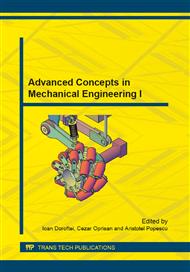p.435
p.441
p.447
p.453
p.459
p.465
p.471
p.477
p.483
Interaction of Particles with the Pulmonary Interface: Effects on Surface Elasticity
Abstract:
We present an experimental study of the interactions of negative and positive model particles and their influence on the surface elasticity of biomimetic pulmonary surfactant. In this purpose we have measured the adhesion force between negative (G) and positive (GS) particles and supported lipid bilayer by Atomic Force Spectroscopy. In addition, the modification in surface elasticity of lipid monolayer under quasistatic compression when interacting with negative and positive particles was investigated on a Langmuir trough. We found that, positive particles interact poorly with biomimetic pulmonary surfactant, therefore no modifications in surface elasticity were observed. Conversely, negative charged particles interact strongly with the biomimetic pulmonary surfactant, decreasing the surface elasticity. The results are directly relevant for understanding the interactions and the effects of particulate matter on pulmonary structures which could lead to pulmonary surfactant inhibition or deficiency causing severe respiratory distress or pathologies.
Info:
Periodical:
Pages:
459-464
Citation:
Online since:
October 2014
Price:
Сopyright:
© 2014 Trans Tech Publications Ltd. All Rights Reserved
Share:
Citation:


